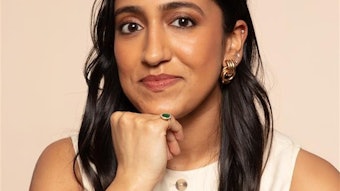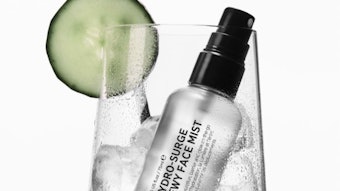In “Underexplored Beauty Segments to Expand Future Revenue Scope,” an analyst insight blog post by Oru Mohiuddin, senior beauty and personal care analyst with Euromonitor International, the market researcher delves into some of the less-explored segments of the beauty markets and making estimates on their potential.
Mohiuddin writes, The beauty industry proved resilient to the economic downturn, achieving a robust 5% CAGR over 2007–2012 according to Euromonitor International, mainly driven by the emerging markets and innovations based on cross-category convergence, which were particularly successful in otherwise volatile Western markets. The beauty and personal care market now, however, seems to be showing signs of a slight slowdown. The first half-year results posted by Unilever, L’Oréal and Colgate showed slower growth in 2013 compared to the same period in 2012. China and Brazil are showing signs of relative fatigue and recovery in Western markets continues to be slow. While it is too early as yet to predict full-year growth rates, leading manufacturers agree that further innovations are needed to sustain existing growth. After vastly exploring innovations based on cross-category convergence, the scope of such opportunities is narrowing. Turning to less explored areas could help to increase the scope of innovation needed to sustain growth in the face of an impending slowdown.
“An area which has traditionally remained underexplored in Western markets is ethnic beauty, primarily because its smaller size has hindered economies of scale. With gradual global expansion, beauty companies are able to leverage their knowledge from regional markets to cater for ethnic consumers in Western countries. In recent times there have been more launches specifically targeting the beauty needs of various ethnic groups. For example, Lancôme Teint Idole Ultra 24H foundation comes in 12 different shades to cater for the various skin tones of different ethnic groups. One of the objectives behind L’Oréal’s acquisition of the Kenyan beauty company Interconsumer Products in 2013 is to access the newly acquired company’s R&D facilities to help develop more targeted products not just for consumers in sub-Saharan Africa but also those of African origin across the world. Hair care in particular offers strong opportunities in both sub-Saharan Africa as well as markets with large communities with African ancestry.
“As part of exploring additional growth opportunities, alignment between beauty and appliances has been gaining greater momentum in recent times, driven by both beauty and electronic appliance manufacturers. The most popular ways of approaching such alignment are either through a direct presence, such as L’Oréal’s acquisition of Pacific Bioscience Laboratories Inc to access the Clarisonic brand, or by forging a partnership with an electronics company, as Unilever has done with light-based treatment systems company Cynosure to launch eye contour devices and other personal care tools. A key benefit emerging from such alliances is that beauty and electronics companies complement each other with their respective knowledge, the success of which can be seen from Clarisonic’s robust growth, with sales increasing from 128,000 units in 2007 to 1,700,000 units in 2012, according to Euromonitor International. Although Clarisonic has been very successful, other companies such as Procter & Gamble, owner of the Olay Pro-X Cleansing System, have been less so as this is still unfamiliar territory and so requires convincing consumers of its efficacy. The high-end technology required to convince consumers of the efficacy of skin care devices has made the category more hospitable to premium brands as mass brands are yet to develop the same level of technology at a lower cost to make such products available within their price range.
“In addition to exploring areas which have been less tapped thus far, some beauty manufacturers are using unconventional methods to create brand exclusivity for their existing products and key categories. For example, Lancôme has collaborated with Alber Elbaz to launch limited edition mascara and eye shadow palettes using his signature patterns on the packaging, while Nars has collaborated with well-known shoe designer Pierre Hardy to launch limited edition nail polish based on his signature colors of orange and navy. This has helped to create a strong buzz around these products and is expected to translate into a better sales performance. Further beauty and fashion alignment can be expected going forward. It has already been seen in fragrances and offers increasing scope in color cosmetics and skin care, with some fashion houses already having launched their own brands of color cosmetics and skin care products.
“Although manufacturers are increasingly looking into underexplored areas to drive growth, these comprise a small share of the overall market. Growth will continue to derive from innovations in mainstream categories, albeit at a slower rate, while less explored areas will help to provide additional momentum. In addition, smaller economies, which are not fully covered by some manufacturers, could also provide a further stimulus to growth through sheer volume sales due to their large populations. Going forward, drawing the right balance between innovation in mainstream categories and underexplored areas and increasingly exploring smaller economies can be expected to bring optimal growth for beauty manufacturers,” Mohiuddin concludes.










